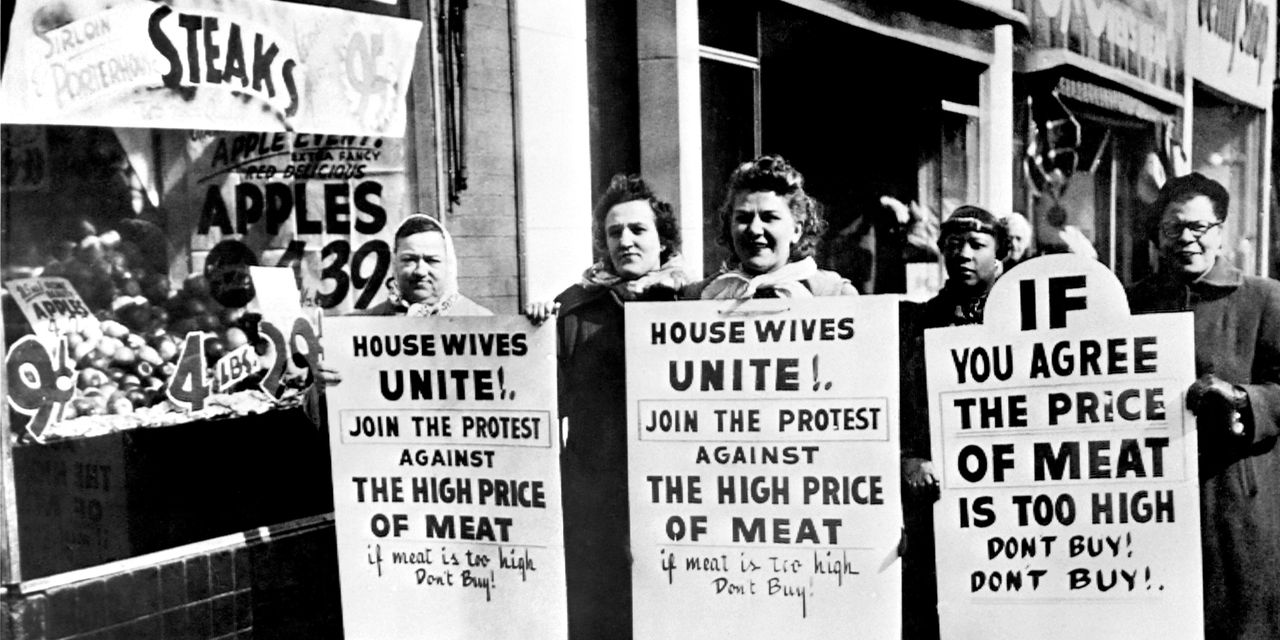Welcome to Disinflation Nation.
After more than two years of rising prices, the rate of inflation is falling—and fast. The consumer price index rose just 3% in June from the prior year, its smallest increase since March 2021. It’s down 6.1 percentage points in the past 12 months, marking the largest such decline since 2009, when inflation had turned to deflation. The last time the rate of CPI fell from above 9% by 6.1 percentage points or more was in May 1952, when the index dropped 7.4 points to 1.9%.
Let’s consider how big an accomplishment this is. Yes, the overall inflation numbers remain too high. Core CPI, which removes food and energy from the equation, sits at 4.8%, well above the Fed’s target of 2%, and average hourly earnings continue to grow at a 4.4% clip.
But there’s a truism investors should fall back on: It’s the direction, not the level. And since the direction of inflation is down, the direction of the stock market is up. It really is that simple, and it’s a big part of why the stock market has raced higher in 2023.
And it very well could keep rising. Bespoke Investment Group’s Paul Hickey notes that the difference between the finished-goods component of the producer price index, which goes back to the late 1940s and fell by 3.1%, and the CPI hit 6.1 percentage points in June, the widest ever. That can signify that margins are holding up or that consumer inflation will be less of a problem.
Either way, a record gap between the two has typically been a good time to buy stocks, with the
S&P 500
averaging a 3.6% gain over the three months following such an occurrence and a 19% rise over the next year. “Prior periods where the spread hit a record were typically followed by above-average equity returns and occurred very late in a recession or in the early stages of an expansion,” Hickey writes.
Right now, it would appear to be neither. Despite an inverted yield curve, sliding leading indicators, and manufacturing surveys that remain in contraction territory, the U.S. economy has yet to sink into recession. John Higgins, chief markets economist at Capital Economics, still expects a slowdown during the second half of the year, which leaves him digging into history for examples of recessions that were accompanied by bull markets.
He found five: the one that occurred at the end of the Civil War; the slowdowns near the ends of World Wars I and II; the recession lasting from October 1926 through November 1927; and the downturn that coincided with the end of the Korean War. Each of the recessionary rallies came at a time when valuations were either very cheap or in bubble territory, and since neither is the case right now, he expects the stock market to drop soon.
“Our forecast is that it will take a knock amid a recession in H2 2023 before powering ahead,” he writes.
There is another option—that the U.S. already experienced its recession and is in a new expansion. That’s the one Hickey favors, based on his comparison of PPI to CPI: “Using this metric would give additional credibility to the viewpoint that rather than a recession being on the horizon, it would more likely be in the rearview mirror.”
Wouldn’t that be a nice surprise?
Write to Ben Levisohn at [email protected]
Read the full article here



